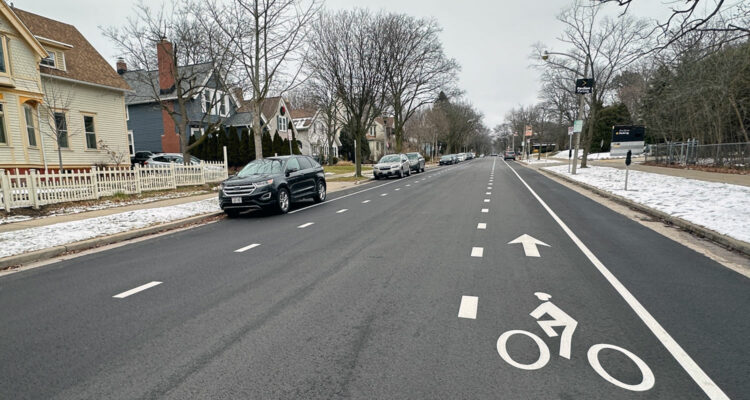If there’s one thing Milwaukee residents and people who simply pass through Milwaukee can agree on, it’s that the city has a reckless driving/driver problem. Article after article, study after study, and horror story after horror story confirm that there are some seriously awful drivers out there. These reckless drivers, emboldened by outdated road design, make things dangerous for pedestrians, bicyclists, and fellow drivers.
But all agreement gets thrown out the car window when it comes to what to do about reckless driving. Lower the speed limit and people will complain. Put a busy thoroughfare on a “road diet” and people will complain. Drop in some jersey barriers or concrete planters and people will complain (and pulverize the things). The message is clear: We want to stop reckless driving, but not like that.
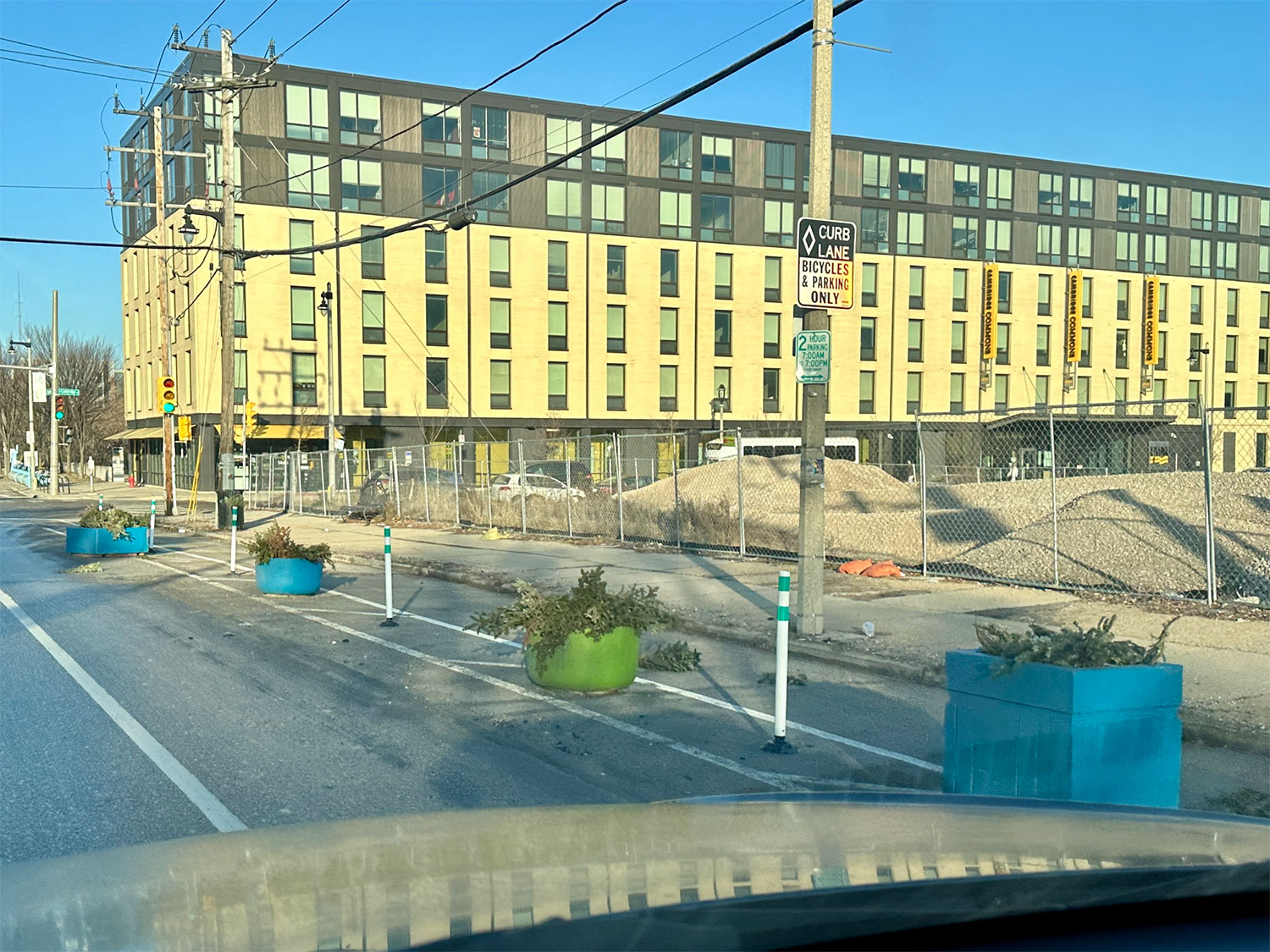
Take, for instance, the subject of today’s Milwaukee Record Review: the advisory bike lanes (ABLs) on Edgewood Avenue. Back in November 2023, bike lanes were striped on each side of Edgewood, from Oakland Avenue to Lake Drive, just north of the UWM campus on the border of Milwaukee and Shorewood. With on-street parking lanes remaining on both sides of the road, this left just one shared middle lane for drivers going both directions. Here’s a before-and-after illustration from the project’s website:
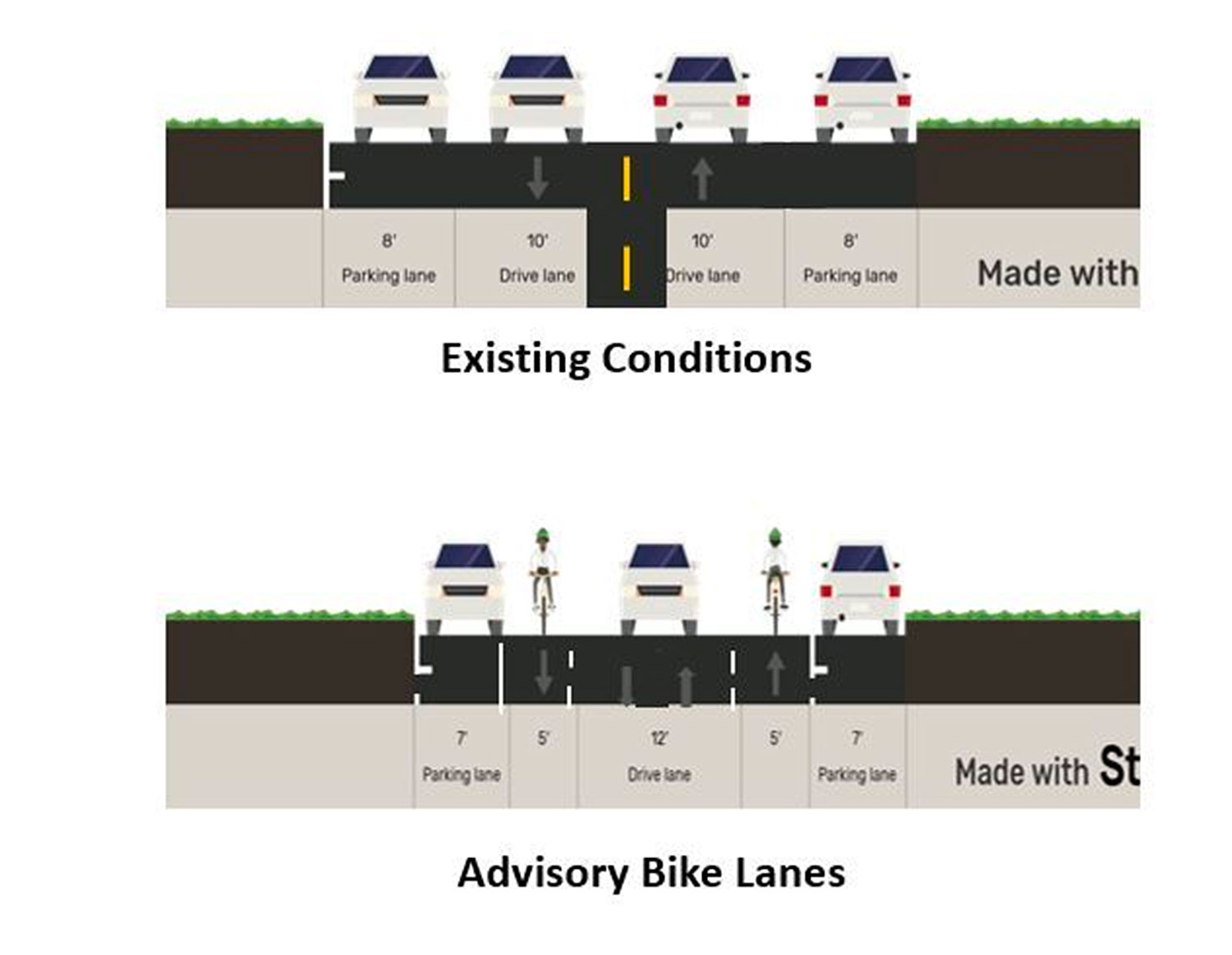
And here’s what it looks like in real life. (From left to right: parking lane, bike lane, shared single drive lane, bike lane, parking lane.)
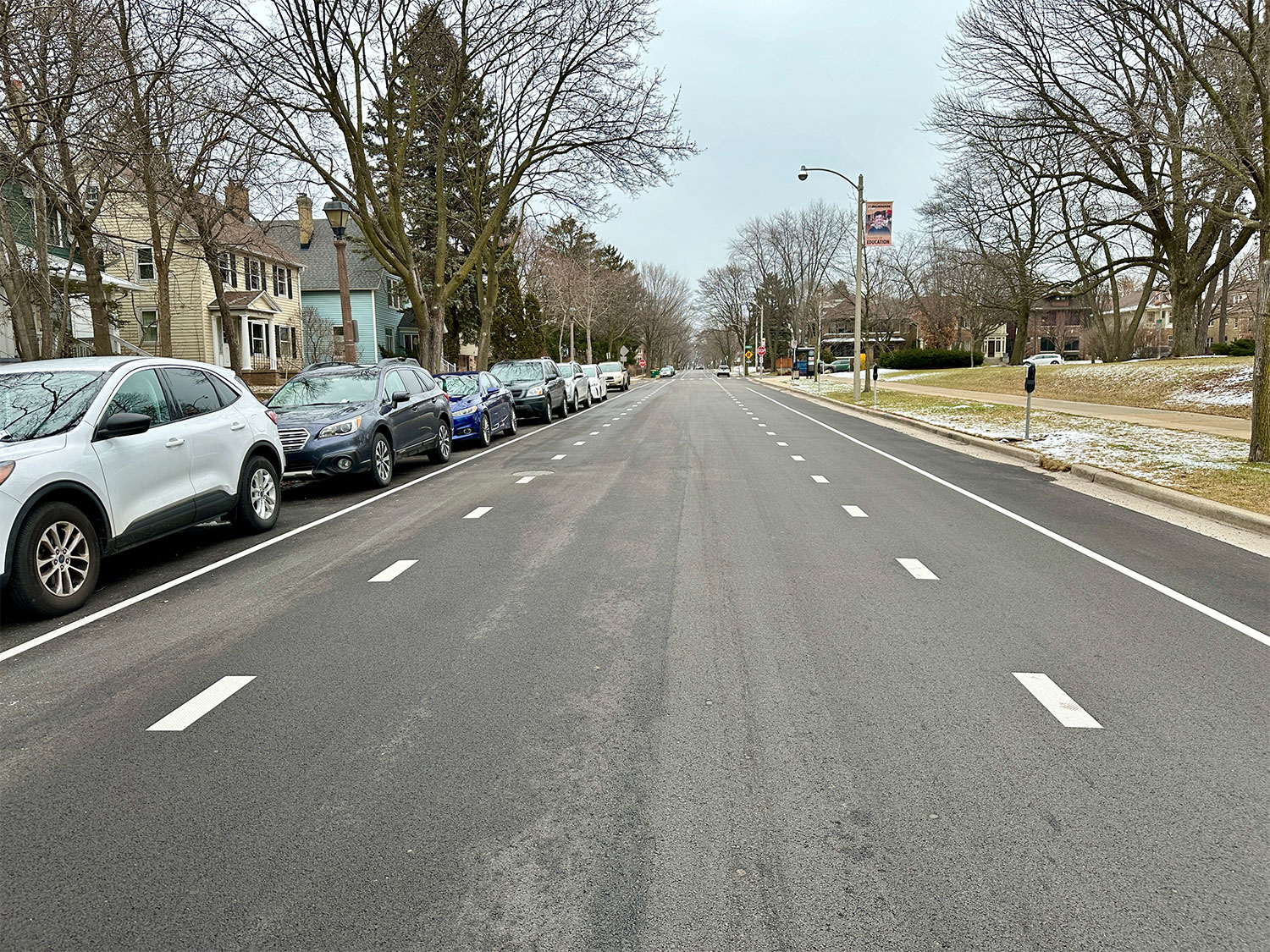
Predictably, people complained. TV news crews descended on the normally quiet East Side street to talk to confused and/or angry drivers and neighbors. Reddit threads wondered if the bike lanes were “stupid,” a poor substitute for real-deal protected bike lanes. Local comedy blog Wisconsin Right Now crafted a satirical outrage piece that called the bike lanes “insane,” and claimed the authors “barely survived” navigating them. Facebook folks did what Facebook folks do.
So how, exactly, are you supposed to drive on Edgewood with these newfangled advisory bike lanes? (“While ABLs are relatively new to the Milwaukee area, ABLs currently exist on over 70 streets across the U.S.,” says the Milwaukee Journal Sentinel.) Here’s how:
1. Drive in the middle lane.
2. If a vehicle is approaching from the opposite direction, check the bike lane to your right. If there’s a bicyclist in that lane, slow down and yield to that bicyclist. Then merge into the bike lane and pass the vehicle approaching from the opposite direction. If, instead, there’s NO bicyclist in the lane, simply merge into the bike lane and pass the vehicle approaching from the opposite direction.
3. Merge back into the middle lane.
Here’s an unofficial but extremely helpful how-to-video:
Here’s an official how-to video from another city with ABLs, Fort Collins, Colorado:
And here’s another from Ann Arbor, Michigan:
What’s the purpose of these advisory bike lanes? Well, to curb reckless driving and cut down on crashes, of course. According to the Milwaukee Journal Sentinel:
A 2021 study from the University of San Jose’s Mineta Transportation Institute analyzed 11 ABLs around the country, studying over 60 million vehicle trips over eight years. The study showed up to a 44% reduction in traffic crashes on roads that implemented ABLs, indicating the street design contributes to traffic calming.
A 2017 report from the transportation firm ALTA concluded that ABLs reduce vehicle speeds, increase driver attentiveness and increase cycling rates.
And would you believe that advisory bike lanes and other traffic calming measures are meant to make drivers stop, think, and…slow down? Again, from the Milwaukee Journal Sentinel:
“The people that I’ve seen on the street so far have been behaving as you would hope to expect, which is they’re paying attention. They see a new type of design and are being cautious, and we actually need a lot more caution in the way we drive on every street in this city,” [UWM Professor of Urban Planning Robert] Schneider said.
The Edgewood advisory bike lanes are part of a $630,000 resurfacing project, the cost of which is being split between Milwaukee and Shorewood. Results from the lane experiment have yet to be released, though other, federally funded traffic calming measures in Milwaukee appear to be working. According to Urban Milwaukee:
Alongside Humboldt Park in Bay View, E. Oklahoma Avenue received a two-phase road diet that resulted in a 37% reduction in the number of vehicles driving over the speed limit and the median speed dropping from 34 mph to 30 mph. […] Automated speed data collected by the Department of Public Works found that only 1% of motorists were observed to drive more than 10 mph over the 30 mph limit, down from 6%.
Even more significant speed reductions have been observed on W. Lapham Boulevard in the Historic Mitchell Street neighborhood. A protected bike lane was added in 2023, which reduced the four-lane street to two lanes and moved the parking lane away from the curb to a location between the bike and driving lanes.
As a result of the changes, a 69% drop was observed in the number of speeding motorists. The median speed dropped from 30 mph to 25 mph, below the street’s posted 30 mph limit. Speed recorders recorded no drivers going more than 10 mph over the speed limit, down from 3%.
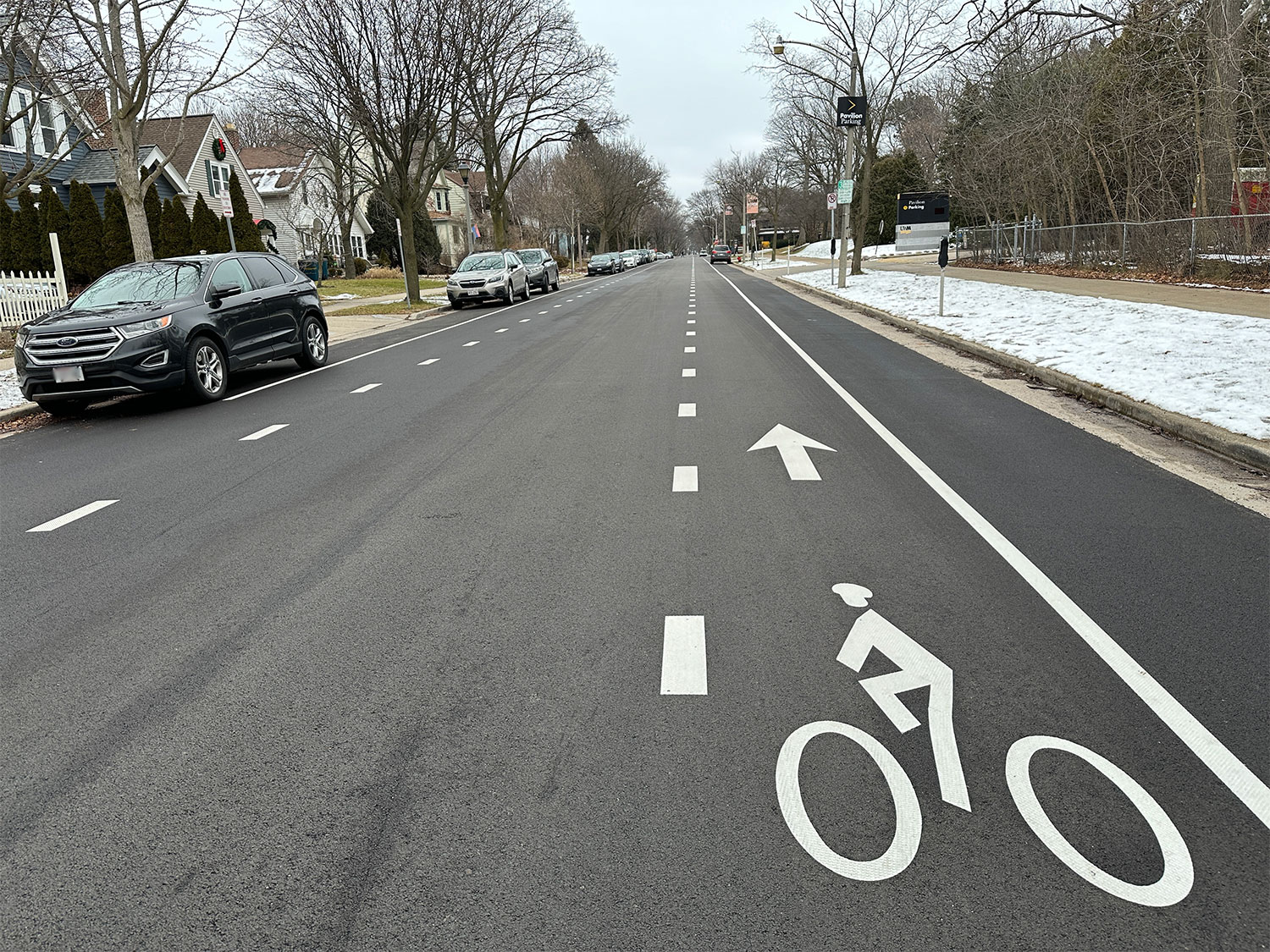
Oh yeah, our review! We first encountered the “insane” advisory bike lanes on Edgewood Avenue in December 2023. They were confusing at first, but after we did some research and adjusted our driving on the road, we got used to them. They’re not perfect, but they’re fine. That’s it. That’s the review.
Milwaukee Record Review: 7/10 ABLs. They’re confusing at first, but after you do some research and adjust your driving on the road, you get used to them. They’re not perfect. but they’re fine.
Want more Milwaukee Record? Subscribe to our free weekly newsletter and/or support us on Patreon.
RELATED ARTICLES
• That Culver’s mural/sign on the East Side: The Milwaukee Record Review
• Those two Cousins Subs locations on Exit 64: The Milwaukee Record Review
• Koppa’s reopened deli: The Milwaukee Record Review
• That ‘Boy With Goose’ sculpture in Marshall Park: The Milwaukee Record Review

